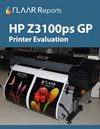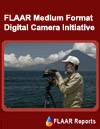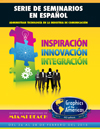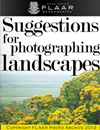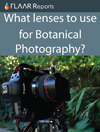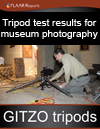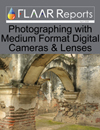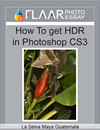Digital Photography Smart Phone Camera Review based on several years experience with six different models of iPhone cameras
Every year I get the next iPhone model (and provide my last year's model to others who work with me at FLAAR). The iPhone XS was a great improvement over previous models. Each year's new model was better, with iPhone 11 being really better. iPhone 12 Pro Max was good as was 13 Pro Max, but I am very happy with my iPhone 14 Pro Max. I show in this digital photography review samples of what this iPhone 14 Pro Max can accomplish. Plus on our www.Maya-ethnobotany.org web site you can download dozens of FLAAR Reports on Neotropical flowers and plants that often include iPhone camera photographs.
 |
|---|
| The depth of field of this iPhone 14 Pro Max snapshot amazed me. The top of the petals (and green spider holding dark bee) are in focus; and the inside of the flower is also in focus. We are preparing a book on flowers of the manzanote cactus of dry areas of Guatemala, Central America. This is a cactus that evolved as a tree: trunk, limbs, branches, twigs, thousands of leaves. But still has spines and is still a plant of the Cactaceae family. We have driven several thousand kilometers criss-crossing the dry scrub forest hills and valleys of the El Progreso and Zacapa areas of central Guatemala. We do this in May and June since in the rain forests these months there is so much monsoon season rain that you can't do much outdoor photography. 99% of manzanote cactus trees have orange flowers. We found two that had white flowers. So far we have not seen the white-flowered variant in any book on cacti of Guatemala. So we are preparing a book on this cactus. We will contact cactus societies and associations and botanical gardens to have a publisher because FLAAR now has the largest collection of high resolution digital photographs of both colors of manzanote cactus in the world. Pereskia lychnidiflora DC. is the accepted name used in most books on cactus of past and recent years. Many botanists today prefer Leuenbergeria lychnidiflora (DC.) Lodé as the accepted name. |
Macro close-up photography with iPhone 14 Pro Max compared with Sony
FLAAR has had four Sony cameras available to its team. Since I am experienced in Nikon since circa 1990's and Canon digital DSLR cameras in recent years, the operating system and controls of Sony are difficult for me to use. But I am aware that mirrorless cameras have endless benefits, especially in-camera stabilization and in-lens stabilization. So you don't need to spend time opening up your tripod, setting the height and angle of the tripod head, etc. We still use Gitzo tripods; they are better than any brand I have used in over 50-years of photography around the world. But with an Apple or Sony mirrorless you can also get great quick snapshots with your hand.
Macro photography is not easy with an iPhone or with any Sony. About half the shots are out of focus (both with iPhone in macro and a Sony with lots of lenses (so not just macro). But, no problem, just keep shooting and throw away the bad ones and enjoy the awesome ones.
 |
|---|
| This photo is cropped from an image of the entire flower. It was taken a few seconds after the other photo above. It's a lot easier to get a macro view by cropping into a well-focused full view. Because to try to get the camera (iPhone) too close to the flower the spider will run away. And if you move the camera too close, it is often a challenge to focus. Photo by Nicholas Hellmuth, July 6, 2023, FLAAR Photo Archive. |
I was very very pleasantly surprised seeing the crisp results of the iPhone 14 Pro Max close-up photos of the spider hauling away the bee it had just grabbed. The close up is processed by David Arrivillaga, so the spider with the bee is cropped out of the larger photo. The size of the original photo is shown in the other photo taken a few seconds before or after. I always take lots of photos when I have an unexpected moving insect or arachnid in front of my camera.
So we recommend that Botanists, Ethnobotanists, Ecologists use iPhone 14 Pro Max
If you are a student doing field work in a remote area or a professor with a project out in the field, it's a lot easier to have an iPhone 14 Pro Max (or comparable other brand) because they you don't have to carry all the heavy traditional camera equipment. We have a 4-wheel drive double cabin pickup truck to carry lots of traditional equipment plus camera assistants and additional photographers. Plus team members and local guides help carry whatever equipment we need. But it's so much easier to just use the iPhone 14 Pro Max.
 |
|---|
| Buds of Crescentia cujete trees start to open about mid-day; they stay "partially open" all afternoon and then about 7 to 8 pm they open more. 9 pm is good time to photograph all the flowers fully open. This photo is about 3:46 pm on June 28, 2023 with an iPhone 14 Pro Max set for RAW (DNG) mode. Original file is about 9MB; finished as JPG is still about 9MB so lots of detail. Notice that this tree flowers from its trunk and branches, not from twigs. So this calabash tree is cauliflorous. Cacao trees, Theobroma cacao, also fruit from the trunk and limbs but those flowers are tiny. The morro trees are very common in El Progreso and Zacapa areas of Guatemala. This one was along highway RD Pro-01, km 148. The same tree is also called jicaro or jicara, but I prefer the word morro for Crescentia alata and jicaro for Crescentia cujete (that we find and photograph in grassland savannas in PNYNN, PNLT in the Reserva de la Biosfera Maya (RBM) of Peten area. Sometimes the trees are called jicara and the fruit jicaro so to find everything on line, Google both spellings. I doubt any botanical book has a photograph anything like this. We inspected several hundred Crescentia alata trees to find which one happened to have this many flowers on the day we were in its habitat. The next week most of the buds and flowers were gone on this same tree were gone, but we found additional trees by driving about 100 kilometers inspecting every tree that we drove by. |
 |
|---|
| Here is a closer view of the flowers of Crescentia alata so you can see details of the flower during the day before it opens fully at night. Thousands of these trees grow in the dry areas of El Progreso, adjacent Zacapa and other surrounding dry areas. The related species, Crescentia cujete, we find in seasonally inundated savannas in the Reserva de la Biosfera Maya (RBM), Peten. |
If you like Neotropical flowers, Guatemala is a great place to study thousands of species. FLAAR has a 5-year project of cooperation and coordination with the government conservation department (CONAP) to hike to remote areas of the rain forests, savannas, swamps, marshes, and lakes of the Reserva de Biosfera Maya (RBM) in Peten area. Prior to that we had a 17-month project to photograph to document flora, fauna, and wetlands ecosystems in the eastern half of the Municipio of Livingston, Izabal, Guatemala. Plus we had a 12 month project coordinated with the dual administrators of PNYNN to photograph plants, flowers, trees, insects, reptiles, birds, and ecosystems in Parque Nacional Yaxha, Nakum and Naranjo, Peten area.
 |
|---|
| Here are what the flowers look like after 7 pm. June 29, 2023, Teculutan, Zacapa, Guatemala, highway CA9, km 122.7. The "flash" of the iPhone is not for this type of photography so the two photographers with me shared their two sets of Sony macro lights (five lights per ring). But for night photography, you will get crisper shots with in-camera stabilization and in-lens stabilization on a Sony a1. We are working on a book about the two species of jicaro/morro since they both bloom at night; both are cauliflorous; and both have usable and also edible parts (of the seed pods). Photo by Nicholas Hellmuth with iPhone 14 Pro Max. |
If you need a telephoto lens, best use Nikon, Sony or Canon (not your telephone)
But if you need a telephoto lens, when we have additional photographers on the same field trip they all prefer a Sony a1 and its 200-600mm zoom telephoto lens. When I need to outdistance the Sony, I use a Nikon D5 with 800mm prime Nikkor lens. iPhone is not yet realistic for serious telephoto photography.
So for bird photography, you need a Sony, Nikon or Canon with telephoto lenses (we have 200mm, 300mm, 400mm, 600mm and 800mm but usually only bring the ones we need for each different field trip to each different ecosystem in Guatemala (not enough space for all five lenses even in a pickup truck because we have to bring all our suitcases, food, lighting, etc.
If you need to do landscape photography, Pano mode with iPhone is awesome
With pano mode you can even photograph a tree from bottom to top even if you are only a short distance from the tree. We will have a separate report on vertical panorama results (for trees since that's what we are photographing in the rain forests of Peten or in the cactus filled dry scrub forests in El Progreso or Zacapa areas of Guatemala.
For horizontal panoramas, surely the other camera brands can produce these, but I am so happy with an iPhone. Our ecosystem biodiversity projects in past years used a Nikon on a tripod and you took a series of photos, turning the camera perhaps about 10-degrees for each next photo. Then you had to use stitching software back in the office to join these photos into a panorama. So it took a lot of time, and patience, to get a single panorama.
As we all know today, you can achieve a gorgeous panorama landscape photograph in between 7 and 10 seconds with any recent iPhone (or other smartphone camera).
I started doing landscape panorama photography with a Dicomed, the first model of Better Light. This used a scan back on a 4x5" studio camera with Rodenstock or comparable lenses of high quality. When Google GigaPan came out we used that for several years. Our photos were even used on the GigaPan website (http://gigapan.com/profiles/FLAAR). You can see these also on http://gigapan.com/profiles/FLAAR/gigapans. You can see Hellmuth and the FLAAR team a decade ago with the GigaPan taking panorama photos in Guatemala.
If you need to accomplish video with your smartphone camera, that is a separate question
99% of my photography is not video. Video photograph is another world. It helps to have a stabilizer for your smartphone otherwise the resulting video from handheld is wobbly. Fortunately we have capable video photographers at FLAAR Mesoamerica, so that is a separate review. But for still photography, I am content with my iPhone 14 Pro Max.
Digital camera photography reviews by FLAAR are based on over 50 years experience
Our reviews today in 2023 are based on photographing insects, tropical flowers, monkeys, crocodiles and other flora and fauna out in the rain forests of Guatemala, Mexico, Belize, Honduras and El Salvador. I have used lots of different cameras:
- I started with 35mm Leica in 1961 to photograph pyramids and surrounding rain forest of Palenque, Chiapas, Mexico.
- I moved to medium format Rolliflex while photographing Maya archaeology for all 12 months of 1965 at Tikal, Peten, Guatemala.
- Then I switched to the more versatile Hasselblad to get 4x improvement of medium format over 35mm.
When a Japanese publisher hired me for 18 continuous months to photograph for their book on Aztec, Olmec, Maya and other art of northern 80% of Mesoamerica: Guatemala, Mexico, Honduras, Belize, El Salvador, I brought along a 4x5" Linhoff and also 8x10" Linhoff. Plus by that year (mid/late 1990's) I already had 3 different Leica cameras, 3 different Hasselblads, and a Nikon for wide angle.
In the digital era we have experience using and evaluating digital camera equipment since circa 1998.
First posted: July 14, 2023. By photographer Nicholas Hellmuth
Free Reports (Inquiry Form)
Additional links of our FLAAR sites |
| Rigid Printable Materials |
| Printing on Glass |
| Sandwich board for recyclable furniture! |
| Metallic Effects |
Free Download Reports
| Home | About Us | Consulting | About FLAAR Reports | Site Map | Privacy Statement | back to top | |||||
|
|||||||||||
www.digital-photography.org is part of the FLAAR network © 2001-2021. If you notice a bad link, missing photos, misspellings, please report to the webmaster: |
|||||||||||







